Are you looking for a GREAT place to duck hunt?
You're in luck because I'm going to tell you seven great spots - all on public land.
Michigan has seven Managed Waterfowl Hunt Areas that offer a near-guarantee of seeing ducks and geese. These areas are specifically managed for waterfowl. The fields are planted with crops that ducks and geese love, and then flooded just before hunting season.

Most of the areas have flooded corn that hunters can hide in, with flooded beans out in front to allow decoys to be set. Some areas offer flooded woods with spectacular wood duck hunting. Most of the areas will offer marshes to hunt in as well.
When I first started hunting these areas in the early 1990s, there was a $4 daily fee. Annual passes could be purchased for $20. Today, all hunters participate for free. I believe that was changed when the DNR started requiring everyone to have a base license.
These managed waterfowl hunt areas have daily drawings, assigning hunting parties to their own little piece of duck hunting heaven. The draws are usually held at 5:00 or 5:30 AM for the morning hunt and generally 11 AM for the afternoon. Each location has their own draw rules so be sure to click the links listed further below.
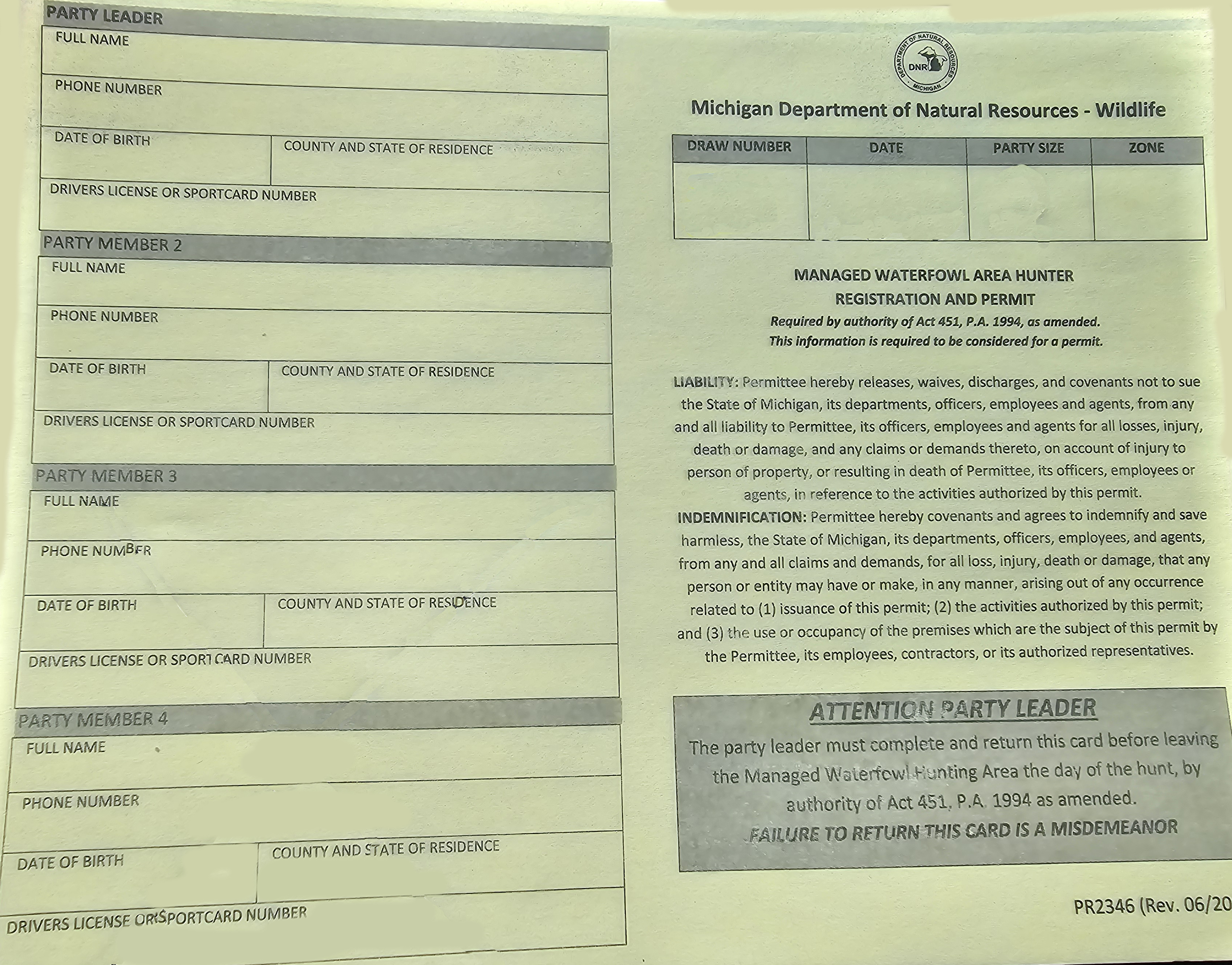
As hunting parties (up to four people per group) arrive, one person checks them in and gets their party entered into the "duck bingo." Each hunting party gets assigned a check-in number and everybody gets a chance to hunt as there's generally plenty of spots available to choose from.

Before the draw, the DNR will go through a description of the area, its water levels, the condition of the cover, as well as any safety related issues.
When the draw begins, the DNR will call out the check-in numbers in order of a random draw. You may be first; you may be last. You'll probably be somewhere in between, but the faster your number gets called, the more sites you have to choose from.
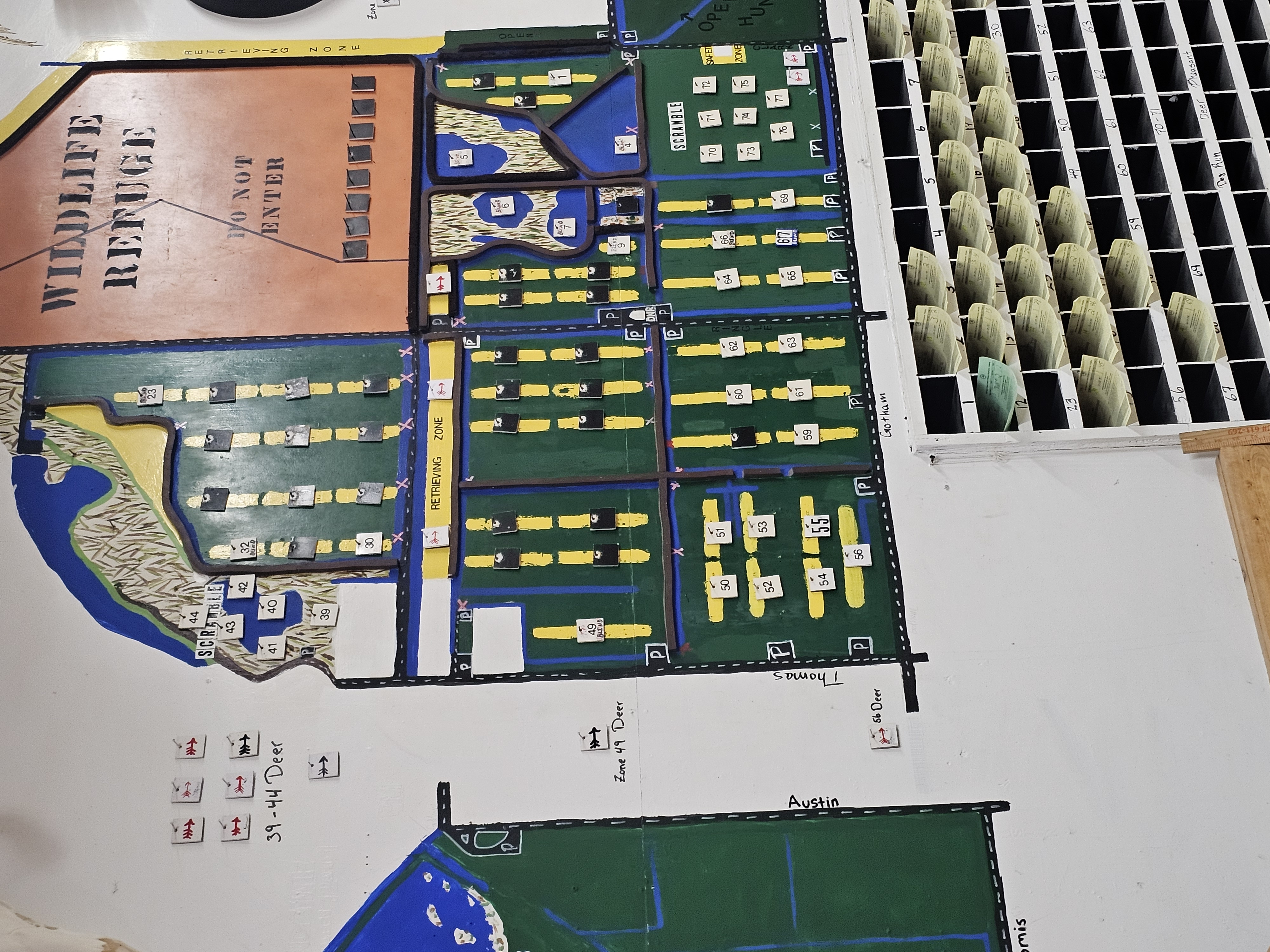
When your number does get called, you choose a spot to hunt and they will cover that spot on the huge wall map of the area so that no other hunters can hunt there.
The seven Wetland Wonders are:
- Shiawassee River State Game Area (Saginaw County)
- Harsens Island Unit (St. Clair County)
- Fish Point State Wildlife Area (Tuscola County)
- Nayanquing Point State Wildlife Area (Bay County)
- Pointe Mouillee State Game Area (Monroe/Wayne County)
- Fennville Farm Unit at Allegan State Game Area (Allegan County)
- Muskegon County Resource Recovery Center (Muskegon County)
These last two units, the Fennville Farm Unit and the Muskegon County Resource Recovery Center, are distinguished from the other Managed Waterfowl Hunt Areas because they are primarily agriculture-based hunting units managed for waterfowl hunting over large tracts of cropland (like standing corn and stubble fields), rather than predominantly flooded marsh or natural wetland systems.
Of the first five areas, some of the areas are predominantly walk in areas, where the water is 6-12 inches deep. Others will require a boat. Nayanquing Point and Fish Point are great for those that just want to wade to their hunting spots.

Other places, like Shiawassee River State Game Area, will find most hunting zones requiring a boat, and many of those spots require a special winch to get your boat over an impoundment dike or two.
The last time that I hunted Shiawassee River SGA, my spot was a two-mile boat ride down the Bad River and then I had to pull my boat over a steep dike. It was worth it though. The ducks were everywhere! Don't let the required effort stop you from hunting Shiawassee SGA - there are a few walk-in areas available as well.

After you pick your spot, you will have neighboring hunters; however, they will be far enough away that you are not shooting at the same decoying ducks.
When your hunt is over, you must fill out the back of the card that you were given when you picked your spot. The card will have all the species of waterfowl listed and ask you how many you shot. The card is either turned into a drop box at that area's DNR headquarters, or dropped into a tube at the boat launch site.
Last year, I invited a new acquaintance to hunt with me at Fish Point. I told him that he'd need waders, and non-toxic shot. I guess I should have specified chest waders because the hip waders that he brought were barely over his knees. The spot we chose happened to be one of the deepest in the area, but I never gave that a thought. To me, "waders" means chest waders and "hip boots" means something entirely different.
These areas all have a shotshell limit. As a young man, I hated limiting myself to 25 shells. A bit older and wiser now, I wish they would limit it to fifteen. My reasoning? Shooting at ducks and geese that are way out of reach can be a common thing at these sites. That educates the ducks real fast!
A 25 shotshell limit attempts to curb that, but if we were to limit it to 15 shots, there would be far more decoying ducks. A duck landing in the decoys is a close shot and much easier than hitting one that's 70 yards up in the air.
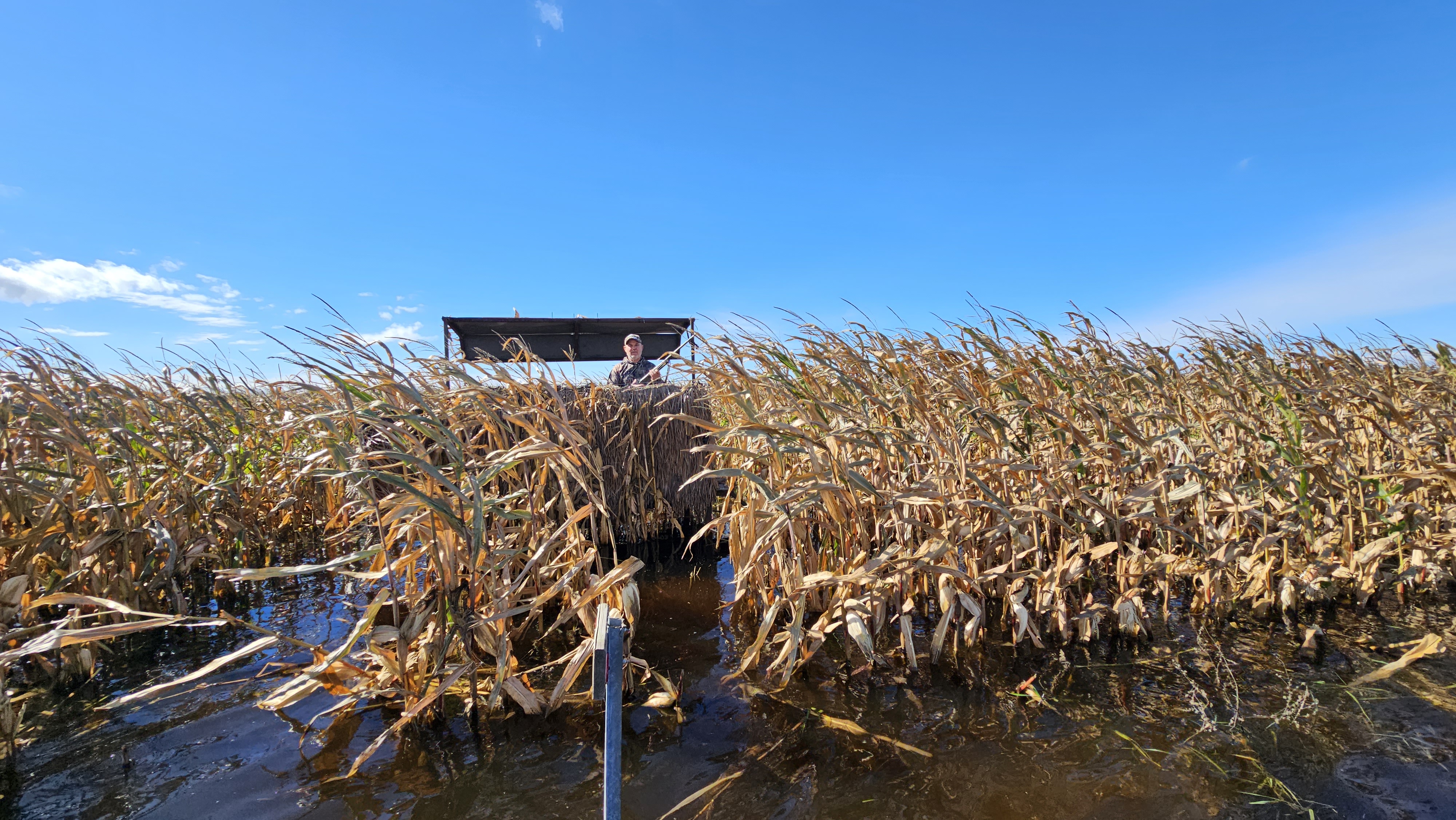
The daily bag limit for ducks in Michigan is 6 ducks, with species-specific restrictions:
- 4 mallards (only 2 can be hens)
- 3 wood ducks
- 2 redheads
- 2 canvasbacks
- 2 black ducks
- 3 scaup
- 1 pintail
Things to remember:
I've been stopped numerous times by a conservation officer while hunting. They have approached me in boats, in the parking lot/boat launch as I pulled in after the hunt, as well as surprising me by wading through the corn behind me as I hunted.

They always check for the same things: Make sure that your shotgun is plugged and can only hold three shotshells at any given time. Non-toxic shot only - no lead in possession at all! You will need to show your license and your federal and state waterfowl stamp/license.
If you're in a boat, they are going to want to see a life jacket for each occupant. A throwable flotation device is required, as well as front and rear navigation lights if you're boating before sunrise or after sunset. They will also check to be sure your shotgun was unloaded and encased while you traveled.
Lastly, they are going to want to see your ducks and geese, and will ask you who shot what. Party hunting is not allowed. You cannot shoot more than your individual limit of ducks, even if your buddy couldn't shoot his.
Don't let these things get you down - these specifics are the law no matter where you waterfowl hunt. It's easy to stay on the right side of the law.

If you haven't tried "Duck Bingo," I urge you to give it a shot. I recommend an afternoon hunt for the new hunters. This gives you plenty of time to find your spot and get set up in the daylight. Sometimes finding the hunting zones in the dark can be difficult, but every managed waterfowl hunting area has maps to guide you.
Don't hesitate to ask the DNR staff any questions that you may have. Before and during the draw, DNR staffers are just too busy to go into any detail. After the draw is over, you will have plenty of time before you head out. This is the best time to ask for directions or clear anything up that you're not sure about.
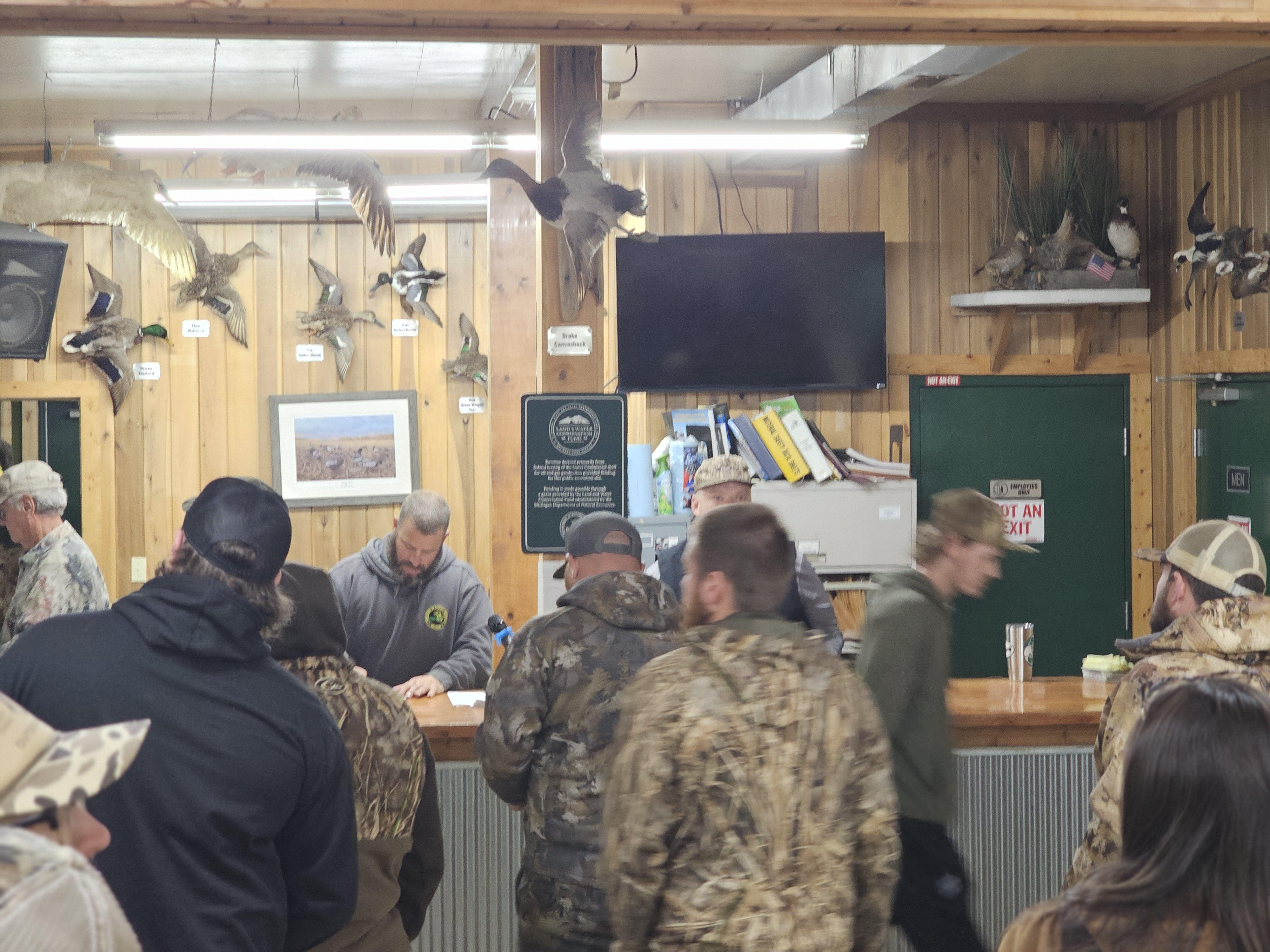
Michigan is fortunate to have managed waterfowl hunt areas. The flooded cornfields are the envy of many hunters in other states. When the winter starts pressing the birds to migrate, these managed waterfowl hunt areas are magnets to the hungry travelers.
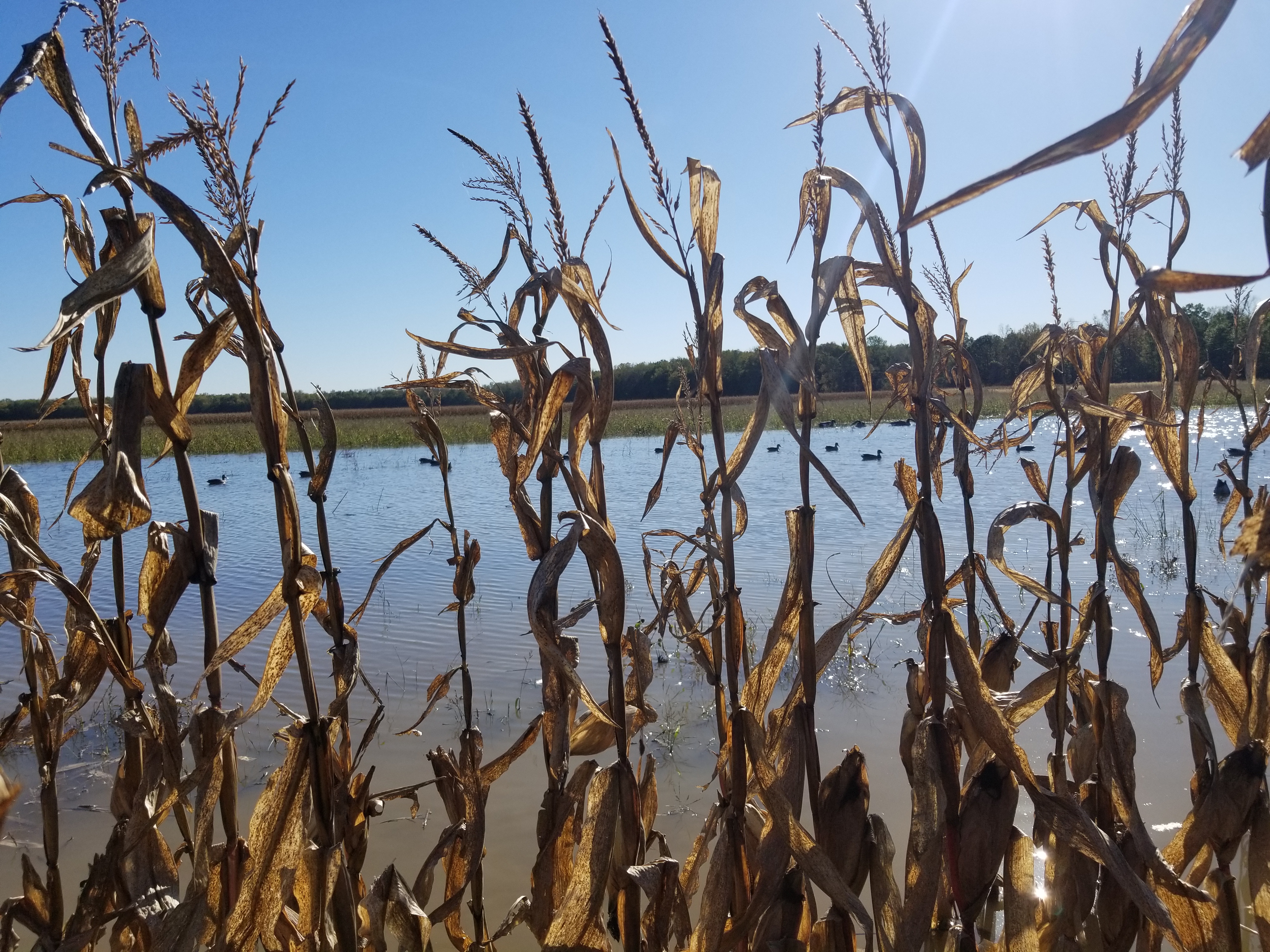
One last thing - Retrievers are welcome at these areas and even encouraged. Ducks don't always land in the open areas and can be hard for hunters to recover. A trained dog makes things much easier.

If you want to see lots of ducks and geese, and increase your chance at bringing home dinner, give "Duck Bingo" a try. I think you'll be amazed!